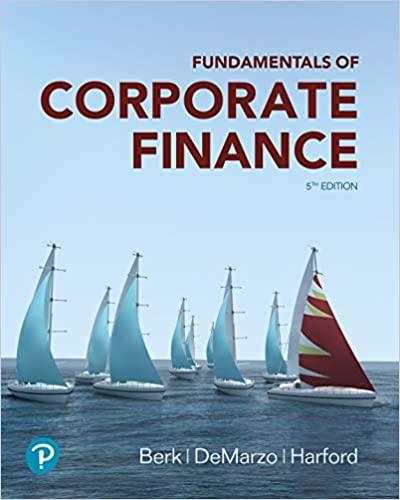Consider the valuation of Nike given in Example 10.1. Data from example 10.1 Recall our example of
Question:
Consider the valuation of Nike given in Example 10.1.
Data from example 10.1
Recall our example of Nike, Inc., from Chapter 7. Nike had sales of $36.397 billion in 2018. Suppose you expected its sales to grow at a rate of 15% in 2019, but then slow by 2% per year to the long-run growth rate that is characteristic of the apparel industry—5%—by 2024. Based on Nike’s past profitability and investment needs, you expected EBIT to be 13% of sales, increases in net working capital requirements to be 5% of any increase in sales, and capital expenditures to equal depreciation expenses. If Nike had $5.25 billion in cash, $3.8 billion in debt, 1,626 million shares outstanding, a tax rate of 25%, and a weighted average cost of capital of 9%, what would have been your estimate of the value of Nike stock in early 2019?
a. Suppose you believe Nike’s initial revenue growth rate will be between 10% and 20% (with growth always slowing linearly to 5% by year 2024). What range of prices for Nike stock is consistent with these forecasts?
b. Suppose you believe Nike’s initial revenue EBIT margin will be between 12% and 14% of sales. What range of prices for Nike stock is consistent with these forecasts?
c. Suppose you believe Nike’s weighted average cost of capital is between 8.5% and 11%. What range of prices for Nike stock is consistent with these forecasts?
d. What range of stock prices is consistent if you vary the estimates as in parts (a), (b), and (c) simultaneously?
Step by Step Answer:

Fundamentals Of Corporate Finance
ISBN: 9780135811603
5th Edition
Authors: Jonathan Berk, Peter DeMarzo, Jarrad Harford





